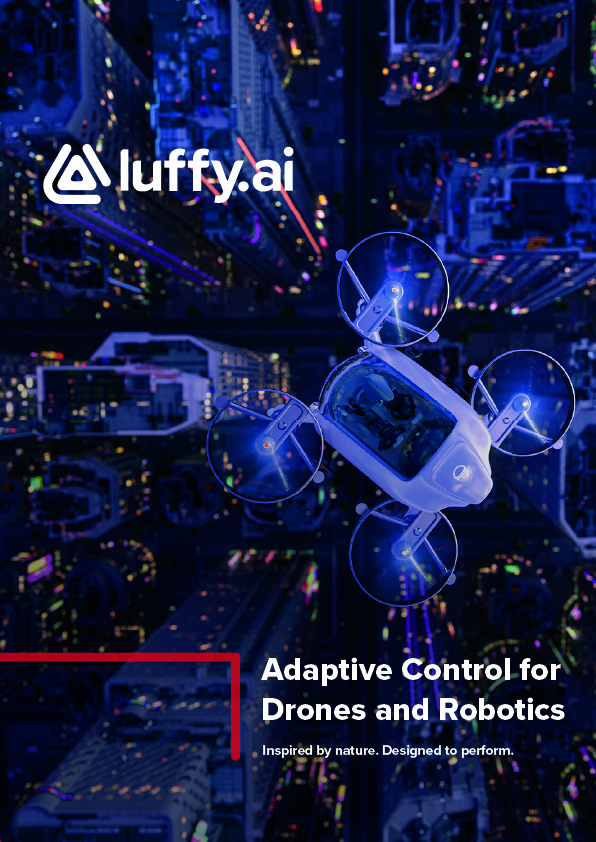Industry Solutions
Drones & Robotics
Ensure safer, more robust and more cost-effective operations with Luffy Al adaptive flight controller.
Time to take control

Pushing the limits
We are witnessing one of the most exciting transformations in aviation since the jet engine was created some 80 years ago. The move to electrification is driving a revolution in vehicle design, whilst the emergence of the drone ecosystem has opened up a whole new range of applications.
However, safety concerns and substantial technology limitations are preventing the widespread commercial use of drones. Reducing the risk that unmanned air system (UAS) operations present to third parties is a key consideration of the Civil Aviation Authority (CAA) and a critical factor in enabling beyond visual line of sight (BVLOS) operations. BVLOS will pave the way to novel drone applications, such as advanced air mobility (AAM), which will truly revolutionise our world.
To realise this future, a new generation of flight control system is required – one that demonstrates improved performance, safety, robustness and autonomy in lightweight, low-cost avionics.
Say hello to Luffy Al
Luffy AI has developed adaptive neural networks that allow real time on-board learning and adaption. Initial results show that Luffy’s AI flight controller qualitatively outperforms conventional autopilot controllers, expanding the operating envelope and improving robustness. This opens the field to new classes of drone body, with lower requirements on manufacturing precision, such as modular or improvised drone platforms.

Safer drone operations
The flight controllers used in drone platforms today are typically based on proportional-derivative-integral (PID) technology. Their performance has been optimised in their tuning region but quickly deteriorates when the vehicle is exposed to unknown dynamics (e.g., wind, dynamic payloads, component failure). Adaptive AI has unlocked unprecedented opportunities for flight control. Adaptive neural networks have the potential to dramatically improve vehicle robustness, performance and operational safety.
Standard flight controller:
Adaptive Al flight controller:

Limited flight performance
Use of simple cascaded PID systems limits the flight performance to the tuning of the vehicle. Changing payloads requires compromises in control settings.

Increased robustnes
Automatic tuning to the vehicle. Adapts to variations in wind conditions, payload and centre of mass.

Low robustness and fault tolerance
Not robust to disturbances failure modes.
Common failure modes can lead to a complete loss of control, even if the vehicle could theoretically recover.

Improved safety and fault tolerance
Graceful degradation when propellers are damaged, or body compromised.

Power efficient
Needs very little onboard processing power (under 10% of one core of a Raspberry PI 4).
Ensure operational
safety with the
power of Luffy's
Adaptive
Intelligence
Resorces
Adaptive Control for Industrial Processes
To download the ebook, please submit form below


